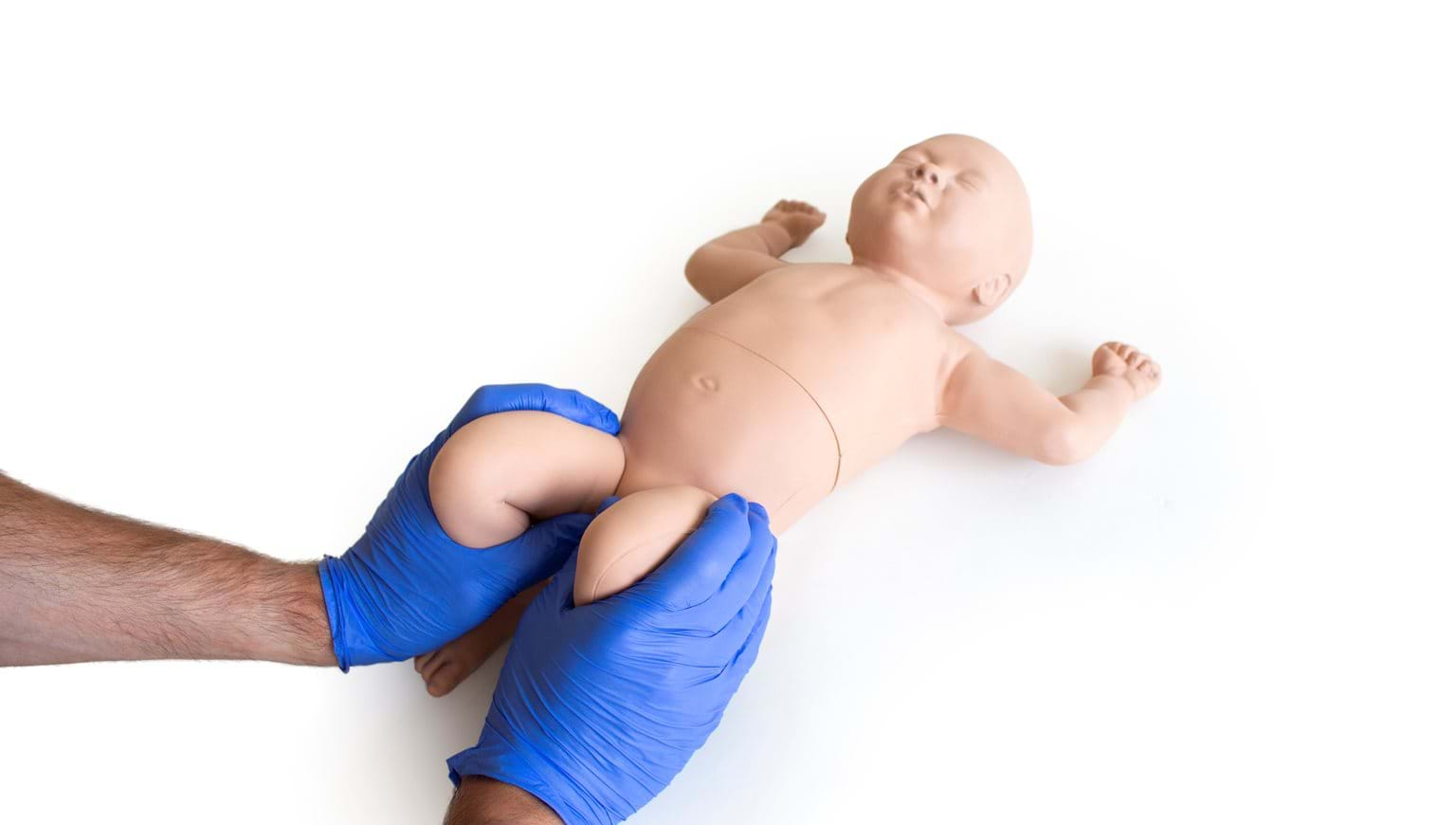News
How Updated Guidelines Have Had an Impact on The Infant Exam
25 August 2022
DDH is a condition prevalent in infants, the new NIPE guidelines require baby's hips are screened to catch DDH at it's earliest stage.

How Updated Guidelines Have Had an Impact on The Infant Exam
In April 2021, the NHS updated its standards for the newborn and infant physical examination (NIPE) which, in addition to screening, includes mandatory reporting of exam completion and resulting actions. The new guidelines state that “all eligible babies are offered the NIPE screen. The screen should be undertaken within 72 hours of birth and then again at 6 to 8 weeks of age.”1
“The 4 components of NIPE are:
- Eyes: about 2 or 3 in 10,000 babies have problems with their eyes that require treatment.
- Heart: around 1 in 200 babies may have a heart problem.
- Hips: about 1 or 2 in 1,000 babies have hip problems that require treatment.
- Testes: about 1 in 100 baby boys have problems with their testes that require treatment.”1
How NIPE effects screening for hip dysplasia
Developmental Dysplasia of the Hip (DDH) is a condition that can be easily corrected if diagnosed early in life. “Undetected unstable hip(s) with delayed treatment may result in the need for complex surgery and, or long-term complications such as impaired mobility and pain osteoarthritis of the hip and back.”1 The purpose of the updated screening standards are:
- “Early identification of a dislocated or a dislocatable hip(s)
- the identification of sonographic pathological hip dysplasia through selective ultrasound scan (USS)
- minimising the risk of long-term complications through:
- timely hip ultrasound scan
- further expert assessment
- early intervention.”1
While originally only performed by medical practitioners, “the extension of the role of the midwife…enabled specially trained midwives to undertake the NIPE.”2 And, while the role was extended back in 1996, only “50% of neonates born under midwifery-led care”2 received the exam from the midwife in 2014.
A study conducted in 2017 queried the NMC-approved education institutions (AEIs) and found “not all AEIs would be able to maintain NIPE competency in midwifery lecturers, and that Trusts may experience a shortage of midwives who are NIPE-trained to supervise students. This could hinder students' ability to successfully complete NIPE training and achieve competency, and the authors noted that there was a distinct variation in numbers of NIPE required by each AEI, which varied from no set number to 50 examinations.”2
In addition to the initial exam within 72 hours of birth, the updated guidelines also require a follow-up exam at 6-8 weeks which “typically takes place in a primary care setting.”1
The NIPE guidelines state the following as the correct hip exam:
“You should undertake both the Barlow and Ortolani test manoeuvres on each hip separately to assess hip stability. The Barlow manoeuvre is used to screen for a dislocatable hip (a dislocatable hip will be displayed out of the joint by this manoeuvre). The Ortolani manoeuvre is used to screen for a dislocated hip (a dislocated hip will be felt clunking into place).”1
The importance of training to detect DDH
A 2021 study looking specifically at the lack of hip exams performed in the GP office in the UK found that “motivation related to the importance of the 6–8 weeks check and confidence to perform the check and refer appropriately were identified” as behavioral factors. The study concluded that “an intervention aimed at improving the diagnosis of DDH”3 should be developed.
From the literature published on the topic of infant hip exam, we see that there is a potential gap in training in the UK related to the importance of and the actual performance of the exam at both 72 hours and 6-8 weeks of life. And the low incidence of abnormality further complicates the learning curve.
As with all skills, mastery only comes with ongoing practice. Learning the proper way to conduct the hip exam and having the ability to feel both normal and abnormal hips is crucial to the success of the DDH exam.
Limbs & Things is proud to introduce the Infant Hip Exam Trainer. The model has been designed to meet the specific requirements of healthcare professionals training to identify and diagnose DDH.
The infant hip trainer comes with 2 interchangeable lower leg modules that allow trainees to identify the differences between normal and abnormal hip pathologies. The Lower Abnormal hip module’s range of motion gives trainees a realistic representation of the following:
- Dislocating a hip that is lax in the socket
- Relocating a hip that is dislocated from the socket, feeling the “clunk” as the procedure is completed
- Using the Galeazzi sign to identify the visual signs of DDH
- Using both the Ortolani Test and Barlow Maneuver on both hip pathologies
Check out our Infant Hip Examination Trainer here.
1 NHS NIPE Screening Programme
2 Are specially trained midwives the right professionals to perform the newborn physical examination?


